#cleenish
Photo

Abandonment of Cleenish Island, Co Fermanagh.
An island once earmarked for the heroes of the 1914-1918 war to come and live after the conflict had ended. My painting shows one of the abandoned houses which now lies derelict partially covered by overgrown vegetation.
A reminder that this was supposed to be an idyllic place for ex-serviceman to come and make a life for themselves.
The purpose was to enable the returning soldiers to settle back into normal civilian life.On this particular island in Bellanaleck, 11 war veterans were given up to 40 acres of land, a house and left to live off the land. However, out of this 11 only one soldier, Johnny Balfour, lived on the island for the rest of his life.
Life on Cleenish must have suited Johnny for he lived until the age of 102. His son and daughter, Sammy and Bella, continued to live on the island after his death.
A bridge to the island was built in 1956 but, before this occupants had to use a boat to get back and forth. Everything from everyday essentials to livestock were transported on the boat to the island. There was no running water or electricity or gas connected to the island either.
Many of the men made an attempt of making a life on the island, however, over time all but one moved off the island. The ex-servicemen did not have an easy life, wet summers and an outbreak of cattle fluke made the early years difficult. And, raising the money to repay the farm loans was also a constant worry.
Going back further in history, Cleenish also boasts a monastic site which dates back to the sixth century. The monastery was founded by St. Sinnell around 550AD and was where St. Columbanus was a scholar.
The Celtic Crosses which are strewn across the island are a reminder of the early religious history of the site
#Ireland#Northern Ireland#abandoned#farmhouse#farmland#irish history#war#wwi#celtic cross#farmstead#derelict#cleenish#cleenish island#bellanaleck#county fermanagh#fear manach#fermanagh#sinnell#columbanus#island#garr8#john garrett#painting#art#artwork#overgrown#architecture#ruins#dereliction#vacated
3 notes
·
View notes
Photo

Final day of the Classic - Cleenish Bridge peg 10. I've had an awful week drawing some hopeless pegs so today I've just gone for it hoping that the hybrids would switch on today with the change in weather and guess what? It didn't happen. 2kg 350g. Looking back on the week my best 2 days were spent on the new section at Boe Island catching some lovely big Erne Roach and Perch, can't say much about the rest of the week but that's the nature of the Classic Competition - 240 pegs in and by the end of the week there's only half a dozen pegs that you really want to draw. It's like the lottery, anyone can win it given the right draw but you've got to be in it to win it! Until next year...
1 note
·
View note
Text
Senior Catholic Priest Calls For 'Complete Ban Of Christmas'
Senior Catholic Priest Calls For ‘Complete Ban Of Christmas’
A senior Catholic Priest has called for a complete and total ban on Christmas, claiming that the Holiday has become too commercialised.
Fr. Desmond Desmond O’Donnell, a parish priest in Cleenish in Co Fermanagh, Northern Ireland, claims Christians have lost the true meaning of Christmas.
Irishcentral.comreports: “We’ve lost Christmas, just like we lost Easter, and should abandon the word…
View On WordPress
0 notes
Photo

Final day of the Classic - Cleenish Bridge peg 10. Right section but wrong peg unfortunately. Will have fun trying to keep up with Cathal Hughes next to me today. Will I go positive and aim to catch a weight or fish more conservative for my section? Nothing to loose...😜
0 notes
Text
A short introduction I wrote for the beginning of my book:
Any project to document Ireland can easily fall into a stereotypical vision of a country and its culture. But in creating a typological-style series was an attempt to keep this project as real and honest as possible, and not a cliché.
There are many reasons for the mass number of abandoned buildings found hidden, laying empty across Ireland. One only has to drive around for a few short hours along rural roads to spot multitudes of homes boarded up, rotting away, forgotten. One reason is Ireland’s culture of seeking out the world, looking for one’s fortune and a possible better life. Thusly, due to the high percentage of the Irish population emigrating annually to places such as England, the United States or Australia, homesteads are left abandoned and forgotten. Another reason for the abandonment of one’s home is immortalised in John B. Keane’s play, ‘The Field’, where a farmer, Bull McCabe, who has toiled on his field for years, gets into a dispute over the ownership of his land and goes to dramatic length to keep and defend what he declares is his. Although a melodramatic illustration, it is true that land is often disputed over in Ireland, and when, for example, a relative dies, often the lands they owned is the most sought after artefact from the will. Because of this, and the size of many Irish families, a fight may arise and go on for years and years, so long that the land and home upon it is left to ruin. So a family may build a new home right next to the ancestral home to rot next-door – an upgrade, as it were. As the granddaughter of an Irish farmer myself, I can contest to this mind-set of how precious land is to the Irish. On the other hand, some homes may be fled from, such as the resettlement homes of Cleenish Island, Fermanagh, where twelve houses were built after World War 1, to help those affected by post-traumatic stress disorder by the horrors of the war settle back into civilian life. Each of the twelve veterans rewarded a house were allocated forty acres of land and a home and left of survive off that land given. However, the island was only accessible by boat, and there was no gas, electricity, shops or utilities, so before long, the island was abandoned.
For whatever reason deserted and left derelict, this is my documentation of those abandoned homes of Ireland.
0 notes
Photo

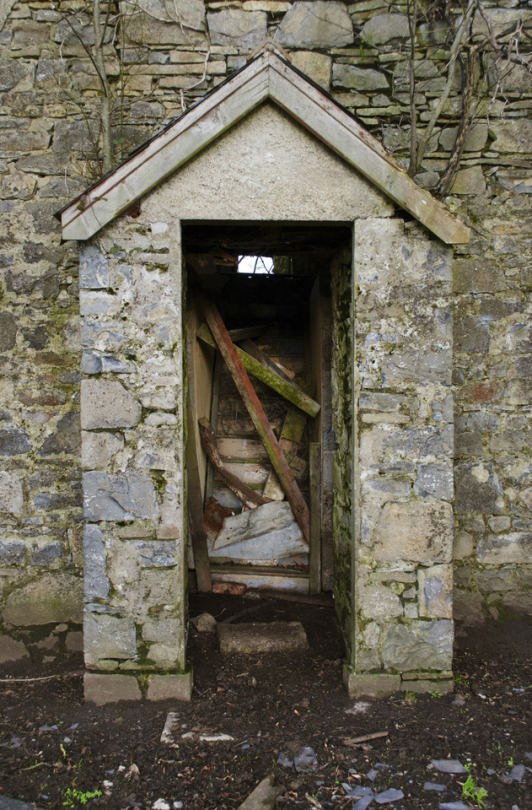
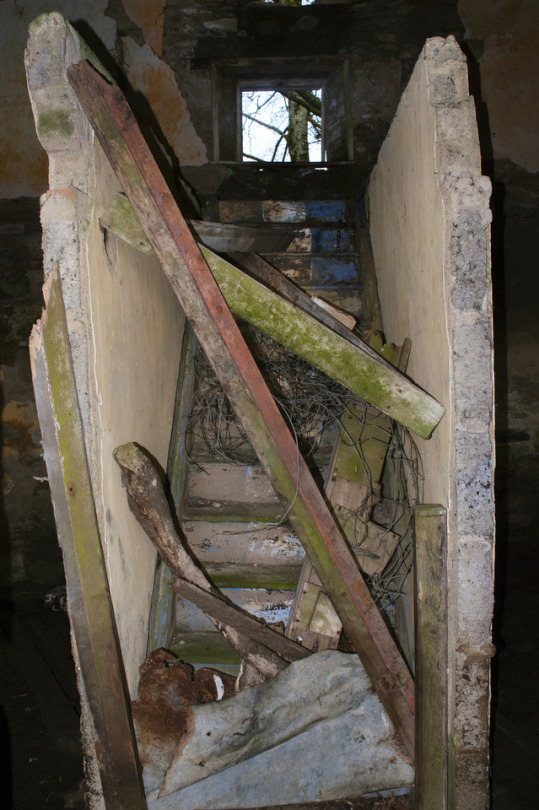
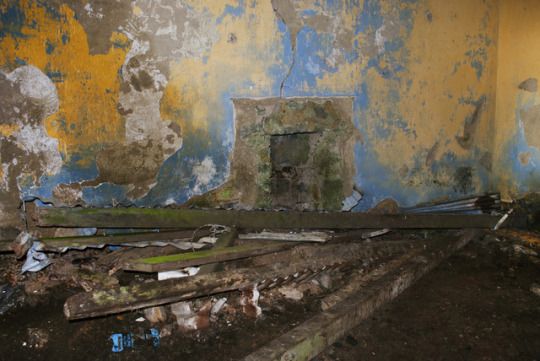
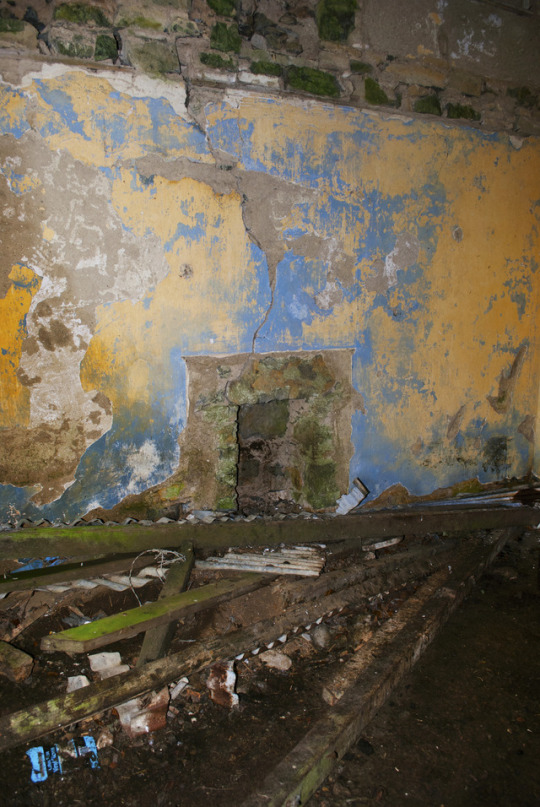
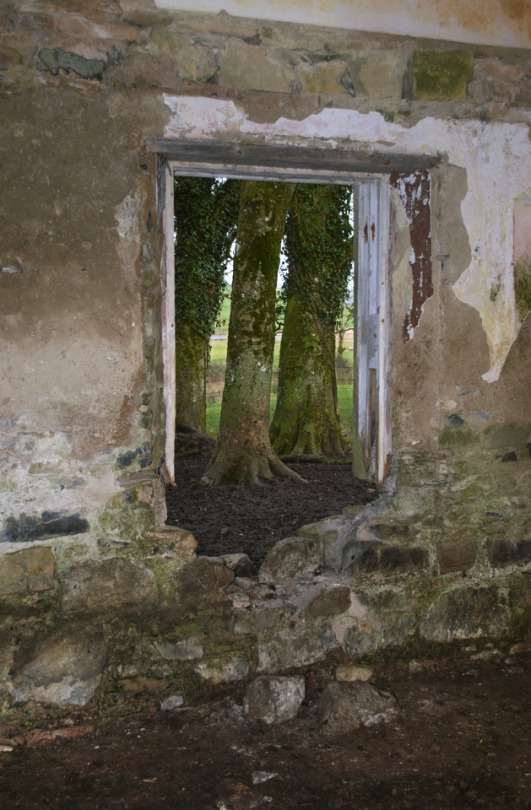
These are the final edits for Site #42. This was another of the resettlement house that I photographed on Cleenish Island, again demonstrating the traditional layout of the home, with the two downstairs rooms, a kitchen on the right and a living room on the left, with a staircase in the middle, straight in front of the entrance door. Then behind the staircase was an storage room and an annex. Upstairs there were two bedrooms on either side of the staircase and no bathroom. But of course the objects found in this house were obviously different to the other houses, giving each a unique character and identity.
I will decide whether they make the final cut into the final book for this major project after all the other photographs have been edited and I can compare all the images next to one another to see which are the strongest and which compliment each other.
0 notes
Photo
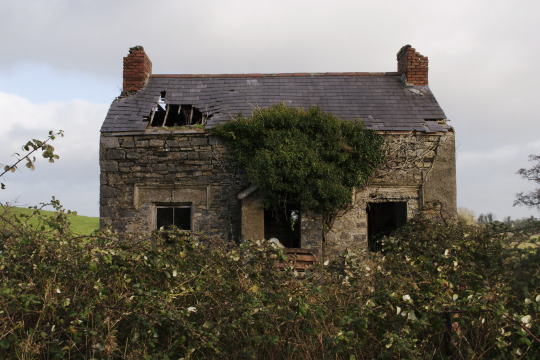


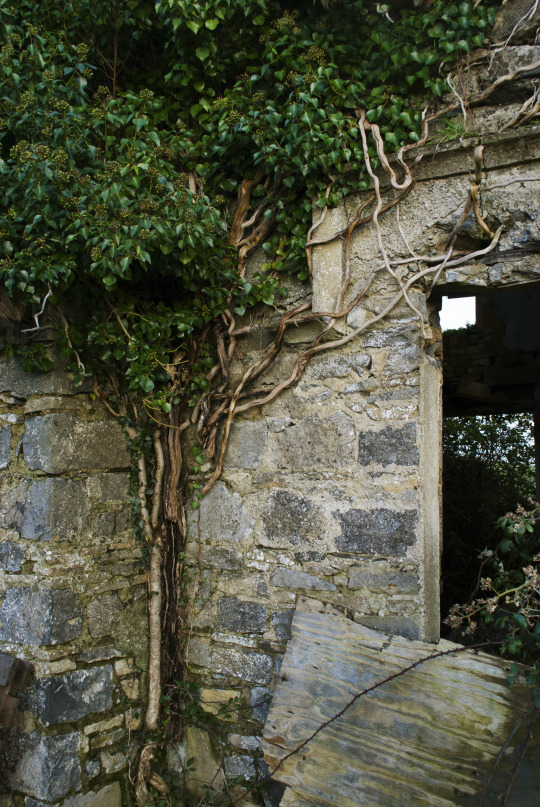
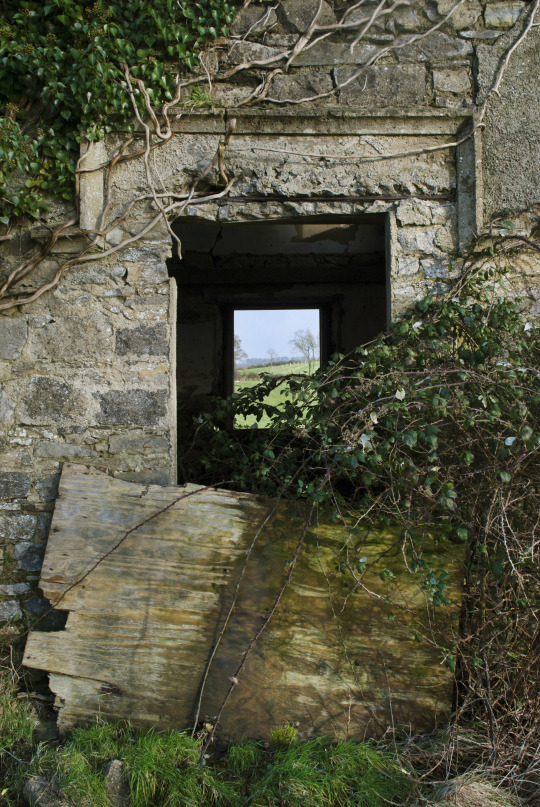
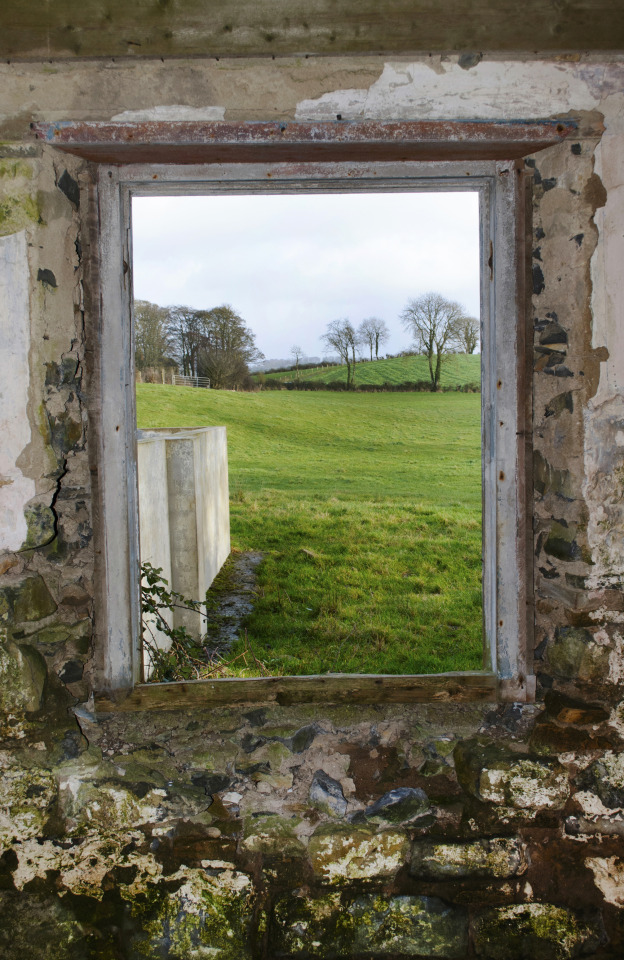
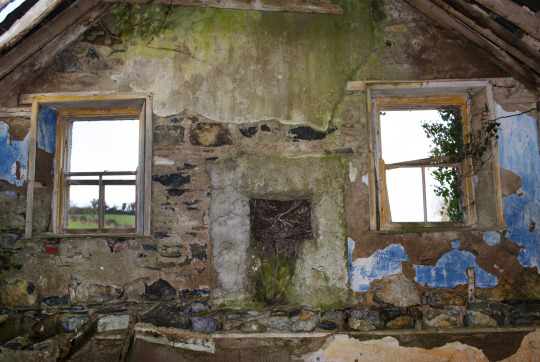
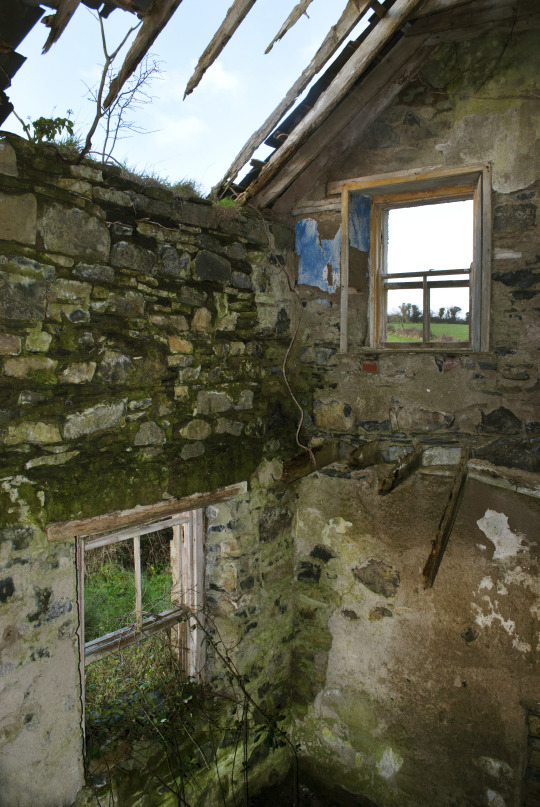
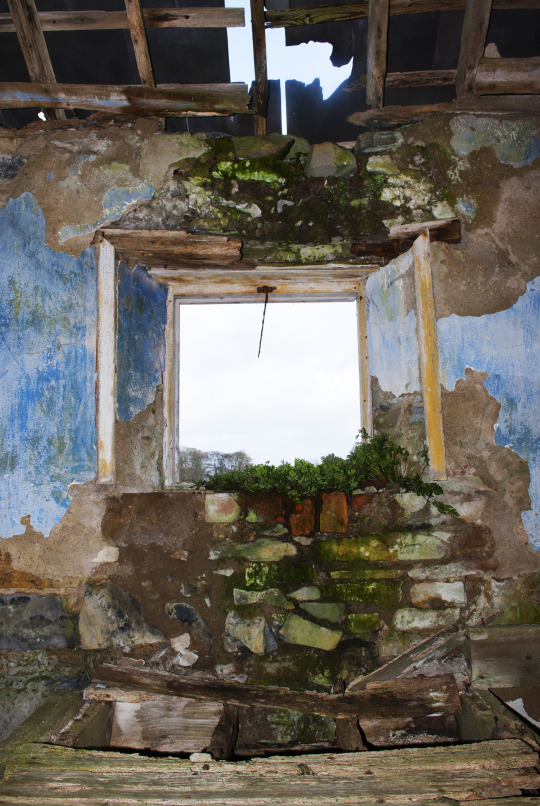
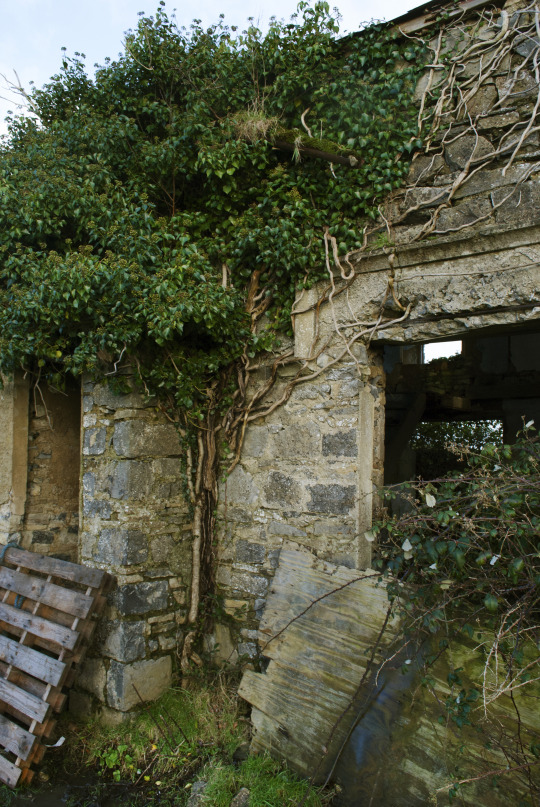
These are the final edits for Site #41. This was another of the resettlement house that I photographed on Cleenish Island, again demonstrating the traditional layout of the home, with the two downstairs rooms, a kitchen on the right and a living room on the left, with a staircase in the middle, straight in front of the entrance door. Then behind the staircase was an storage room and an annex. Upstairs there were two bedrooms on either side of the staircase and no bathroom. But of course the objects found in this house were obviously different to the other houses, giving each a unique character and identity.
I will decide whether they make the final cut into the final book for this major project after all the other photographs have been edited and I can compare all the images next to one another to see which are the strongest and which compliment each other.
0 notes
Photo
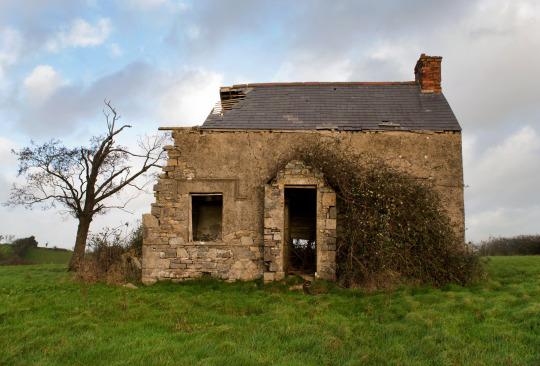

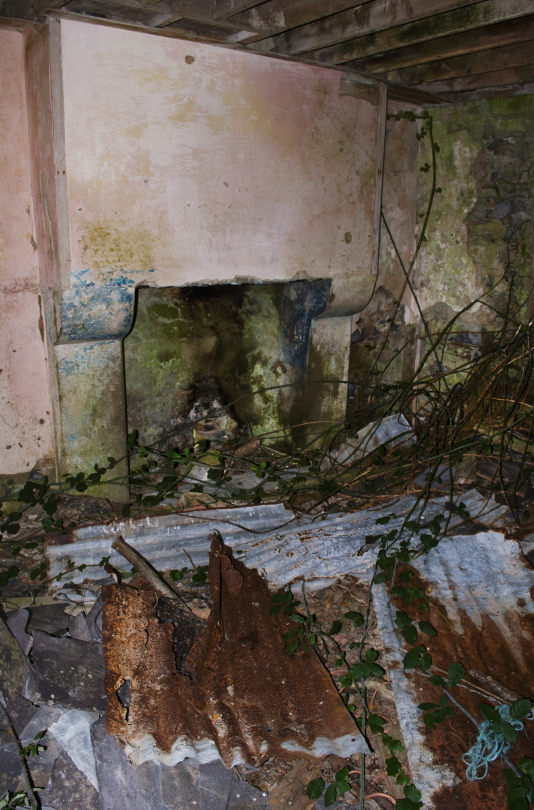
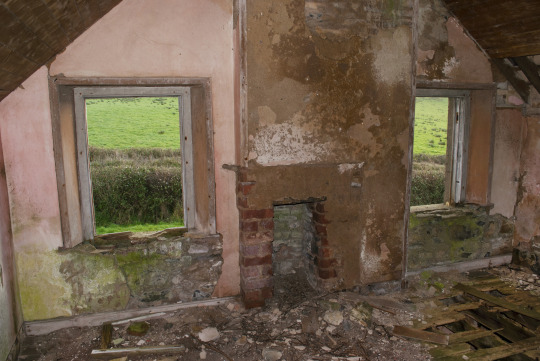


These are the final edits for Site #40. This was another of the resettlement house that I photographed on Cleenish Island, again demonstrating the traditional layout of the home, with the two downstairs rooms, a kitchen on the right and a living room on the left, with a staircase in the middle, straight in front of the entrance door. Then behind the staircase was an storage room and an annex. Upstairs there were two bedrooms on either side of the staircase and no bathroom. But of course the objects found in this house were obviously different to the other houses, giving each a unique character and identity.
I love how this house opened out to the elements due to a wall having fallen down, similar to the house I photographed at Site #2. It gives this interesting contrast and relationship between the house and the landscape around it in the photographs.
I will decide whether they make the final cut into the final book for this major project after all the other photographs have been edited and I can compare all the images next to one another to see which are the strongest and which compliment each other.
0 notes
Text
Here is a list of all the locations I went to, both in English and in their Gaelic equivalent, if they have one:
Marble Arch, Co. Fermanagh - _, Contae Fhear Manach
Gortatole, Co. Fermanagh - _, Contae Fhear Manach
Belcoo, Co. Fermanagh ��� Béal Cú, Contae Fhear Manach
Corraglass, Co. Fermanagh - _, Contae Fhear Manach
Mullaghdun, Co. Fermanagh - _, Contae Fhear Manach
Drumcolgny, Co. Fermanagh -_, Contae Fhear Manach
Letterbreen, Co. Fermanagh – Leitir Bhruín, Contae Fhear Manach
Gorteen, Co. Fermanagh – An Coirtín, Contae Fhear Manach
Marlbank, Co. Fermanagh - _, Contae Fhear Manach
Killykeegan, Co. Fermanagh - _, Contae Fhear Manach
Bohevay, Co. Fermanagh - _, Contae Fhear Manach
_, Co. Fermanagh - _, Contae Fhear Manach
Holywell, Co. Fermanagh - _, Contae Fhear Manach
Garrison, Fermanagh – An Garastún, Contae Fhear Manach
Cliffoney, Co. Sligo – Cliafuine, Contae Shligigh
Correen, Co. Fermanagh – _, Contae Fhear Manach
Aghatirourke, Co. Fermanagh - _, Contae Fhear Manach
Killwywillin, Co. Fermanagh - _, Contae Fhear Manach
Cleenish Island, Co. Fermanagh – Clanawley, Contae Fhear Manach
Magheradunbar, Co. Fermanagh - _, Contae Fhear Manach
Ballyhose, Co. Fermanagh - _, Contae Fhear Manach
Cosbytown, Co. Fermanagh - _, Contae Fhear Manach
Tullynadall, Co. Fermanagh - _, Contae Fhear Manach
Derrygonnelly, Co. Fermanagh – Doire Ó gConaíle, Contae Fhear Manach
Belleek, Co. Fermanagh – Béal Leice, Contae Fhear Manach
Ballyshannon, Co. Donegal – Béal Átha Seanaidh, Contae Dhún na nGall
Finner, Co. Donegal – Fionnabhair, Contae Dhún na nGall
Ballymore, Co. Leitrim – An Baile Mór, Contae Liatroma
Rooskey, Co. Leitrim - _, Contae Liatroma
Drungan, Co. Leitrim - _, Contae Liatoma
Aghavogill, Co. Leitrim - _, Contae Liatoma
I think the names of some of these places may be one of the best things about the project, and I for sure want to include them in my book, because there is nothing quite more Irish than incomprehensible place names.
And then the Gaelic is always interesting, to me at least, because the place names always have a literal meaning in Irish. Such as Cliffoney, which in Gaelic is Cliafuine, which means “hurdled thicket”. And Derrygonnelly, which in Gaelic is Doire Ó gConaíle, which means “O'Connelly's oak grove”, whoever O’Connelly is. Then there’s Belleek, which in Gaelic is Béal Leice, which translates to “mouth of the flagstones”. And Ballymore, which in Gaelic is An Baile Mór, which means “the large town” - ironically, Ballymore is not a large town at all... maybe by Leitrim standards. And Belcoo, in Gaelic, Béal Cú, which translates to “mouth of narrow water” or “mouth of narrow stretch/body of water”. Even the counties’ names have meanings; such as Fermanagh, which in Gaelic, Fhear Manach, means “men of Manach”, “manach” being old Irish for “monk”. And Sligo, or Shligigh in Gaelic, means “bounding in shells”; it’s a costal county. And Donegal, in Gaelic, Dhún na nGall, which means "fort of the foreigners".
0 notes
Photo

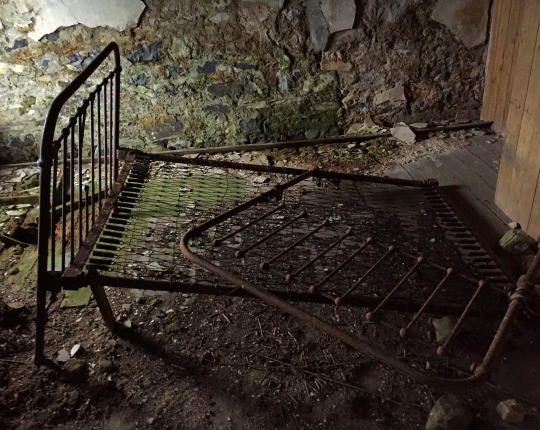
These are a couple of photos I took on mu iPhone at a site on Cleenish island, just to give an example of the kind of objects found at some of the locations and how they really tell a story of the history of the site I am photographing. Here for example, I found two brass beads in the upstairs floor; a common object in any traditional Irish house - not to sound too cliché. Even I, when visiting my grandmothers house as a young child, remember sleeping in a big brass bed - it seemed every Irish house had at least one. So it was somewhat nostalgic to find two remaining in what was once someone’s home. And this is the purpose of photographing the remaining object in these sites - not for ghost stories or eeriness, but for the romanticism and nostalgia an object can tell about the history of a place.
Photos above taken by me on my phone and posted on Instagram.
0 notes
Video
I filmed - just on my iPhone; not the most awe-inspiring quality - one of the locations I was at today on Cleenish Island, Bellanaleck, Fermanagh. This was the upper floor of the house where there were two bedrooms - no bathroom - with two brass beds still left from the previous owner.
0 notes
